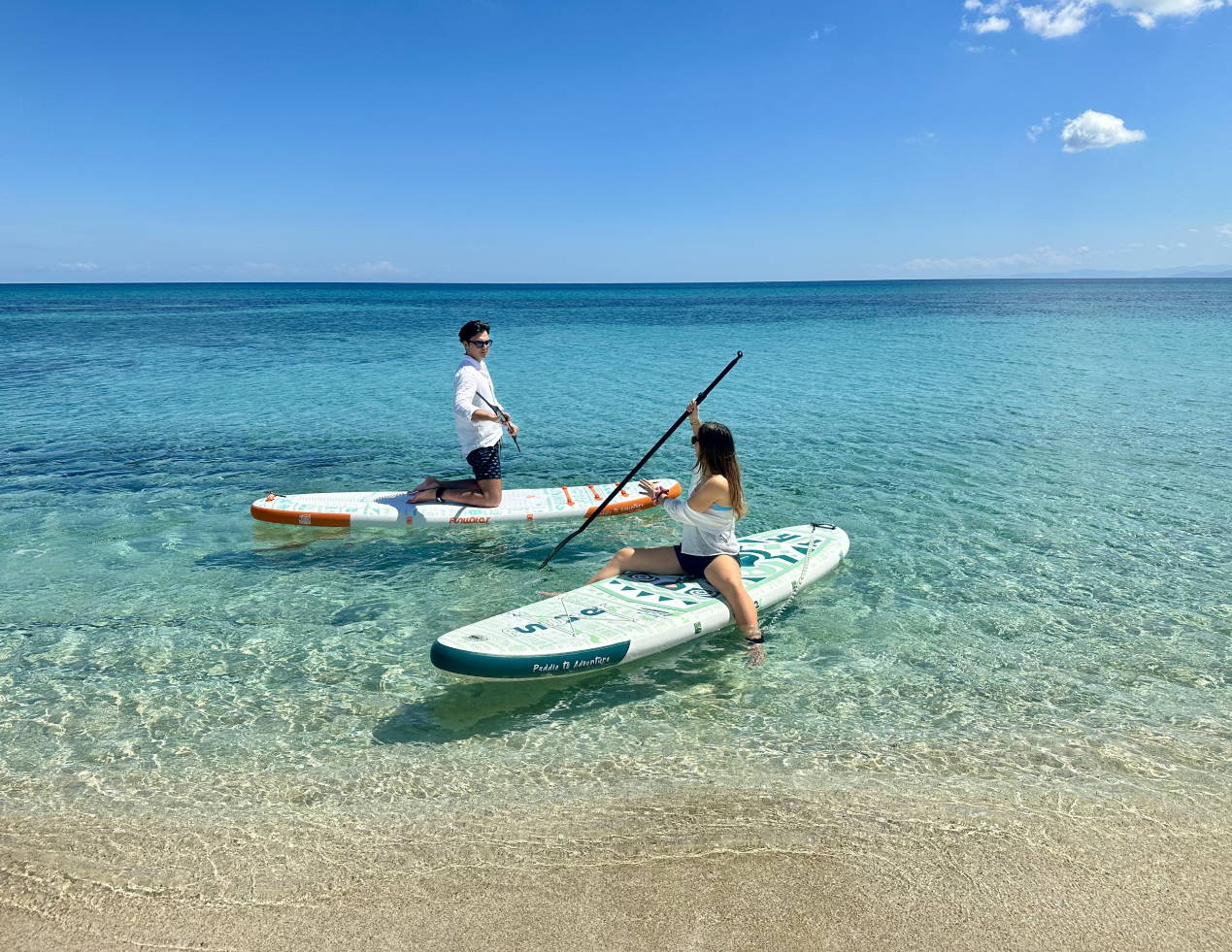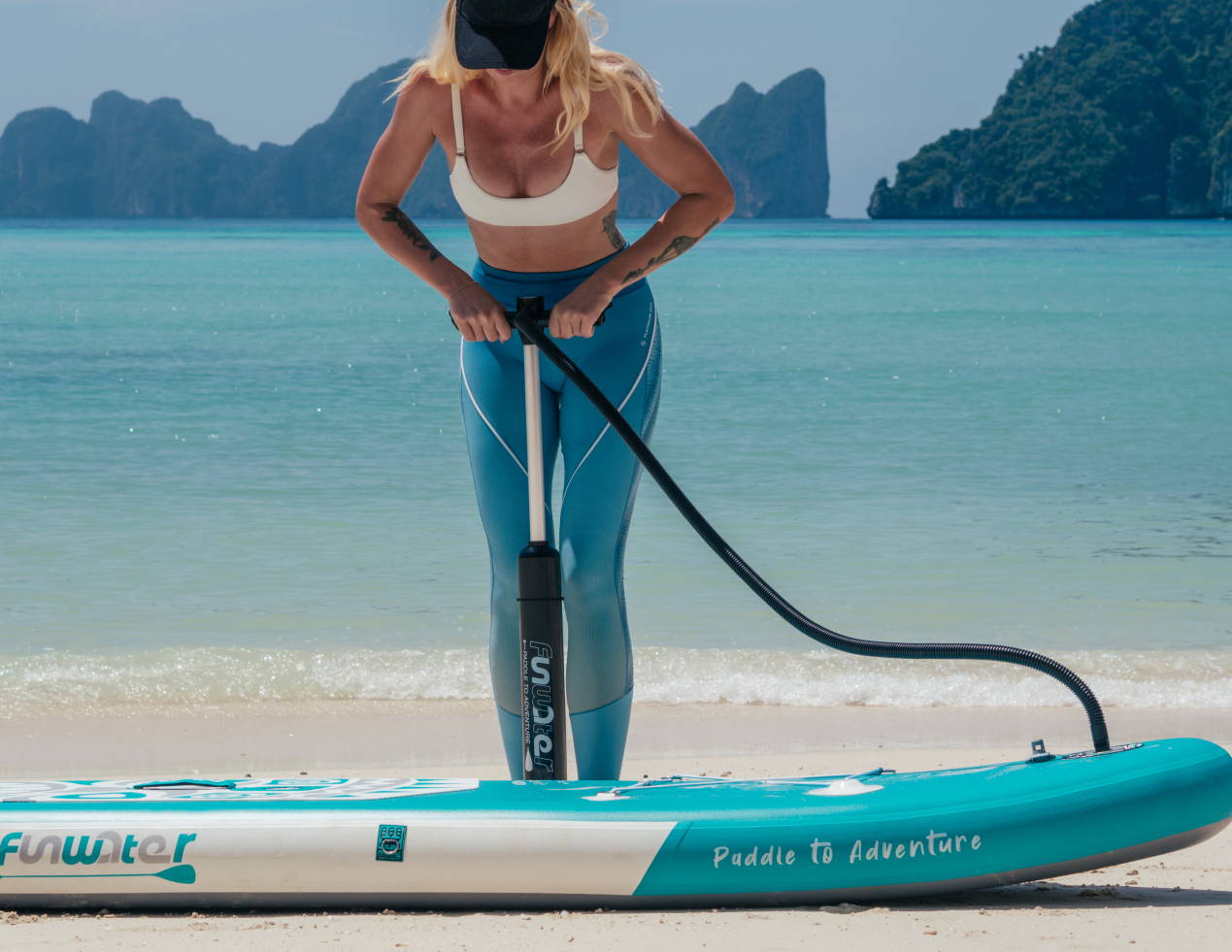Our paddle boards are crafted with a flat hull design, offering a wider surface area that enhances stability on the water. Whether you’re paddling through calm lakes or mild waves, you’ll feel secure and balanced.

Stability & Safety with Funwater®
At Funwater, we prioritize your safety and enjoyment on the water, especially if it’s your first time paddle boarding. That’s why we carefully design our boards with features that ensure both stability and ease of use.
Need help getting started?
Let’s take a look at our all-around paddle boards.


All accessories for your paddle boards.
Let’s take a look at our gears prepare for SUP beginners.
Wider with Flat Hull Design
Our paddle boards are crafted with a flat hull design, offering a wider surface area that enhances stability on the water. Whether you’re paddling through calm lakes or mild waves, you’ll feel secure and balanced.
Lightweight but Strong
Despite their lightweight construction, our boards are built using durable, high-quality materials that can easily support your weight. Whether you're a beginner or a seasoned paddler, this makes your overall experience smooth and enjoyable.
Non-Slip Deck Pad
The soft, cushioned deck provides a comfortable, non-slip surface for standing or kneeling, improving balance and reducing the risk of slipping.
Reinforced Drop-Stitch Technology
Offers superior rigidity and stability, ensuring the board maintains its shape even under pressure.
Universal Fin System
The detachable fin allows for customizable tracking and stability, making the board adaptable for different water conditions.
Bungee Storage System
Provides secure storage for gear, perfect for bringing essentials like water bottles, dry bags, or personal items on your adventure.
Both cost-effectiveness and functionality
The best choice of most beginners.
Most Popular Blog
Trending Articles
What size paddle board is best for beginners?
For beginners, the ideal paddle board size typically ranges from 10 to 12 feet in length and 32 to 34 inches in width. A board of this size offers greater stability, making it easier for those new to the sport to balance and paddle efficiently.
How do I balance on a paddle board for the first time?
To master the art of paddle boarding, start by hopping into calm, shallow water—no cannonballs! Position the board like a pro, kneel down like you’re proposing to it, find that sweet balance spot, and then rise up slowly, like a majestic paddle boarder-in-training. Engage your core (it’s your secret weapon), don’t flail your arms like you're swatting flies, and whatever you do, keep your gaze forward—your feet aren’t going anywhere! Lastly, keep that paddle in the water, it’s your trusty sidekick in this balancing act!
What’s the difference between inflatable and solid paddle boards?
Inflatable paddle boards are great for beginners, travelers, and casual paddlers due to their portability and durability. Solid boards are better suited for performance-driven activities, where speed and precision matter.
Do I need special equipment to start paddle boarding?
To start paddle boarding, you’ll need a board (inflatable or solid), a paddle, and a leash for safety. A personal flotation device (PFD) is important, along with quick-drying clothing. Add sunscreen, sunglasses, and a waterproof bag for essentials. That’s all you need to hit the water!
How do I choose the right paddle for my height?
To choose the right paddle length, add 6 to 8 inches to your height. If you plan to kneel, add 4 to 6 inches instead. An adjustable paddle can also accommodate different heights. Ideally, the grip should be at or above your head when the blade touches the water.
Is paddle boarding safe for non-swimmers?
Yes, paddle boarding can be safe for non-swimmers. Always wear a personal flotation device (PFD), choose calm waters, stay close to shore, and use a leash. Practice safe falling techniques and consider taking a lesson to build confidence. With precautions, non-swimmers can enjoy paddle boarding safely!
What are the best places to paddle board for beginners?
The best places for beginners to paddle board include calm lakes, tranquil ponds, slow rivers, shallow coastal bays, and protected beaches with gentle surf. Resorts offering rentals and guided tours also provide safe environments for beginners to practice paddling and balancing without challenges from strong currents or waves.
How do I transport and store a paddle board?
To transport a paddle board, use a roof rack for solid boards or deflate and roll inflatable boards into a bag. Secure them properly. For storage, ensure the board is dry, store it indoors away from sunlight, use a padded bag, and keep it vertical or horizontal.